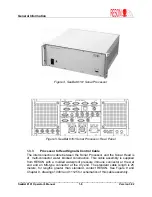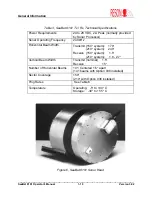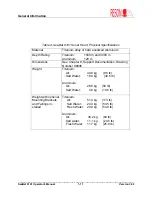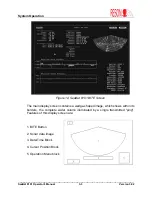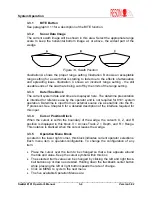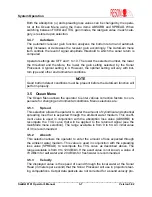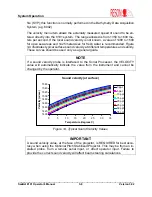
Installation
1. Stray currents may exist on the mounting structure (vessel, ROV, towbody,
etc), and it is mandatory to keep the head isolated from these currents.
2. Aluminum alloy has a higher electrode potential than many commonly used
structural materials such as steel, stainless steel, and titanium; therefore the
aluminum sonar housing will suffer from galvanic corrosion if in direct contact
with them while submerged in seawater.
3. If the sonar head is not electrically isolated from the structure, the attached
anodes will attempt to protect the entire structure from galvanic corrosion,
rather than just the sonar head. These anodes are not sized for this task, and
will erode very quickly.
2.5.2 Titanium
The optional 8101 Sonar Head housing is composed of titanium, and will not
corrode. However, RESON strongly recommends that it be installed so that
there is complete electrical isolation between the housing and the mounting
structure. This is done for two reasons.
1. Stray currents may exist on the mounting structure (vessel, ROV, towbody,
etc). It is advisable to keep the head isolated from these currents.
2. Due to the extremely low electrode potential of titanium, it is noble to nearly
all other metals when immersed in seawater. Therefore, if it not isolated, it
can cause galvanic corrosion of the mounting brackets and hardware, and
place an additional load on the mounting structure's sacrificial anodes, caus-
ing them to erode very quickly.
2.5.3 Isolation
Electrical isolation for both the Titanium and Aluminum heads is typically
achieved by insulating them from the mounting brackets by the use of non-
conductive bushings, washers, and isolation plates. These materials can include
delrin, G-10 glass fiber sheets, and/or high-density polyethylene sheets. Contact
RESON Engineering for additional information on sacrificial anodes or schemes
for electrical isolation
2.6 Ping Hold-off Feature
This paragraph applies only to systems that have Dry Firmware version 8101-
2.04-83E4 installed, and not to a standard 8101 system.
The addition of the “Ping Hold-off Feature” provides a method to synchronize the
8101 transmissions (pings) to a external controller device. No operator action is
required, once the appropriate signal source has been connected to the system,
as described below.
______________________________________________________________________
SeaBat 8101 Operator's Manual
2-8
Version 3.02

